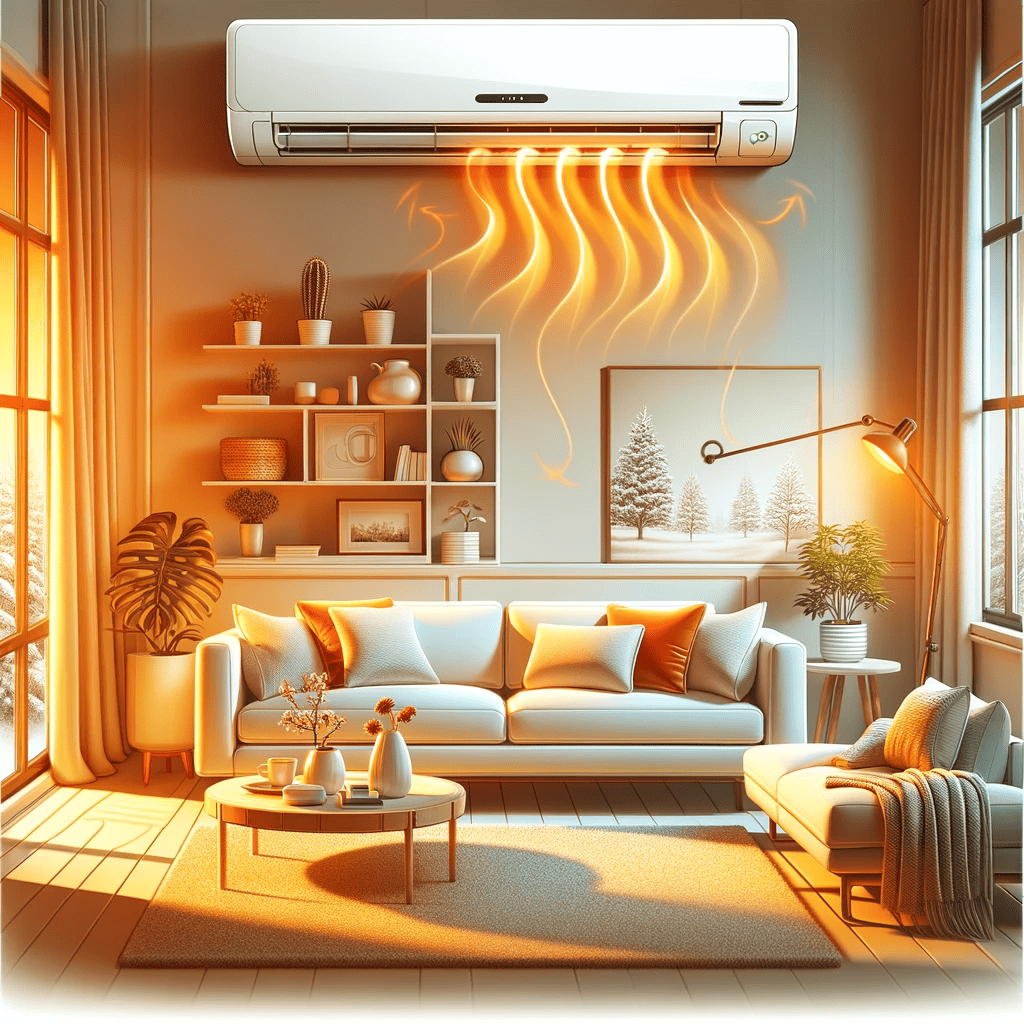Can a Ductless Mini Split System Adequately Heat an Entire House?
Ductless mini split systems have soared in popularity among homeowners in recent years. Their flexible installation, energy efficiency, and zoned climate control provide major perks over traditional HVAC units. As these systems make their way into more homes, a common question arises: Can a ductless mini split heat an entire house effectively? The answer depends on several key factors. In optimal conditions, a ductless system can be an excellent whole-home heating source. But results may vary based on the climate, square footage, layout, and capabilities of the unit(s) installed.
This article will help homeowners understand:
- How ductless mini splits work
- What impacts their heating efficiency
- Common heating concerns and solutions
- Overall cost-effectiveness
Let’s dive in and answer the ductwork-free heating dilemma!
Table of Contents:

Can a Ductless Mini Split Heat an Entire House?
The verdict is yes - ductless mini splits can effectively provide low-cost, energy-efficient heat for an entire house in the right conditions.
How Do Ductless Mini Splits Work?
Ductless heat pumps, often called “mini splits” provide heating and cooling directly to the indoor space without ductwork running through walls and ceilings. Here’s a quick breakdown:
- An outdoor compressor and indoor air handling units are installed in separate locations.
- Refrigerant lines and wires connect the systems to transport heat or cool air.
- The indoor units have built-in fans to circulate conditioned air.
- Smart controls allow you to set temperatures independently based on each zone’s needs.
Single-Zone vs Multi-Zone
While single-zone systems have one outdoor unit and one indoor air handler, multi-zone systems link multiple indoor units to one (or more) outdoor compressors. This enables homeowners to control temperatures in separate rooms or floors for truly custom comfort.
Heating Capacity Matters
A ductless system’s BTU heating output must align with the size of your living space for sufficient winter warmth. Undersized units won’t cut it for whole home heating. While a 12,000 to 18,000 BTU mini split can easily heat a single open space up to 600-900 sq ft, adequately heating an entire average-sized home requires:
- At least one 36,000 to 42,000 BTU unit
- Multi-zone system with properly-sized units in separate zones
- Strategic placement for uniform heating
Now let’s explore why heating capabilities can vary.
Factors Affecting Ductless Mini Split Heating Efficiency
Several elements impact a mini split system’s effectiveness for whole-home heating:
House Size and Layout
Larger square footage and vaulted ceilings make it more challenging for ductless systems to maintain warmth in the coldest winter months. Prioritize strategic placement of multiple indoor units. Well-insulated spaces with fewer external walls will heat more efficiently. Open floor plans circulate air better than small, closed-off rooms.
Climate Conditions
Frigid temperatures dipping into single digits can diminish ductless heat pump performance over time. Systems may struggle to provide sufficient indoor heating for very cold regions. Combining mini splits with backup heating sources can supplement when needed. In temperate and warmer climates, mini splits perform wonderfully year-round.
Presence or Absence of Ductwork
With no ducts to heat or cool, 100% of the mini split’s capacity directly warms or cools the indoor space. This gives them a leg up over central HVAC units which lose 10-20% efficiency through leaky, inefficient ductwork.
Strategic Indoor Unit Placement
Since ductless systems rely on line-of-sight airflow, smart placement is vital for even, consistent heating. Mount units high on walls to maximize circulation reach. Prioritize large rooms, northern walls, and spaces prone to getting chilly. Now let’s tackle some common heating concerns homeowners have.

Ductless Mini Split in living room
If the thought of relying solely on a ductless system for whole-home winter heating gives you pause, know that solutions exist!
Extreme Cold Performance
It’s true that frigid temperatures below 5°F may hinder ductless performance. Additional heating can supplement as needed. Options include:
- Electric radiant floor heat
- Wall-mounted electric heaters
- Wood-burning stoves
- Gas furnace (with existing ductwork)
Alternating between the systems helps balance heating costs.
Multiple Smaller Units vs One Large Unit
A common mistake is purchasing one large unit to save money upfront. Oversized mini splits operate inefficiently. Plus you’ll miss out on zoned climate control benefits!
Investing in properly-sized multi-zone systems tailored to each space works best for even, energy-efficient heating.
Cost Effectiveness
Higher upfront installation costs pay off over 5-10 years for homeowners replacing oil or electric furnaces. Mini split systems can also lower energy bills by up to 30% with their energy efficiency ratings of 15+ SEER.
The Bottom Line: Are Mini Splits a Viable Whole-Home Heating Solution?
The verdict is yes - ductless mini splits can effectively provide low-cost, energy-efficient heat for an entire house in the right conditions.
Key considerations are your:
- House size and insulation
- Heating needs based on climate
- Willingness to install multiple indoor units
Strategically pairing mini splits with supplemental heating sources as needed enables them to heat comfortably. We recommend connecting with qualified HVAC pros to analyze your home’s requirements. An evaluation of layout, materials, local weather patterns and an energy audit will determine ideal system specifications and placement for optimal performance. Investing in a quality installation the first time guarantees reliable, customized whole-home heating using innovative ductless technology.

